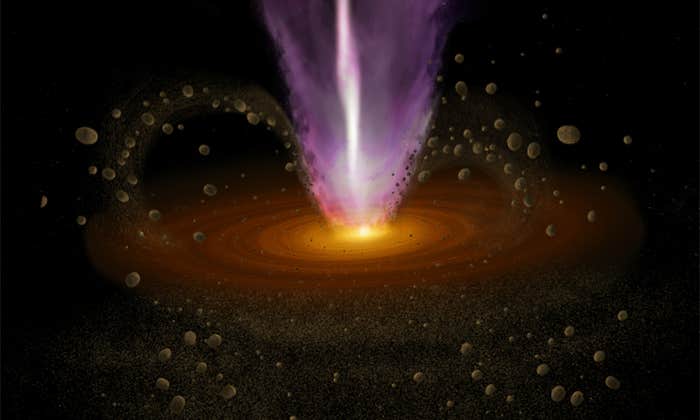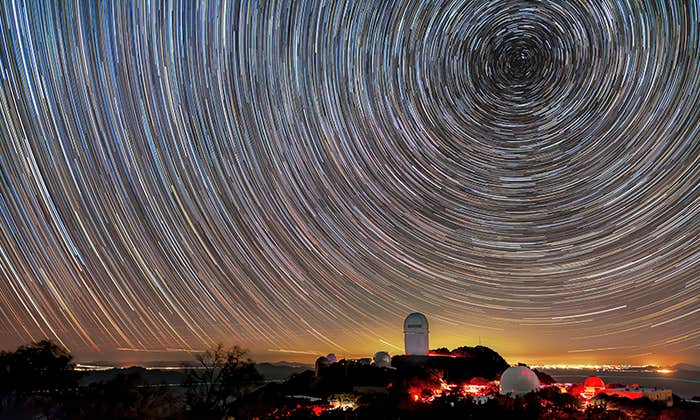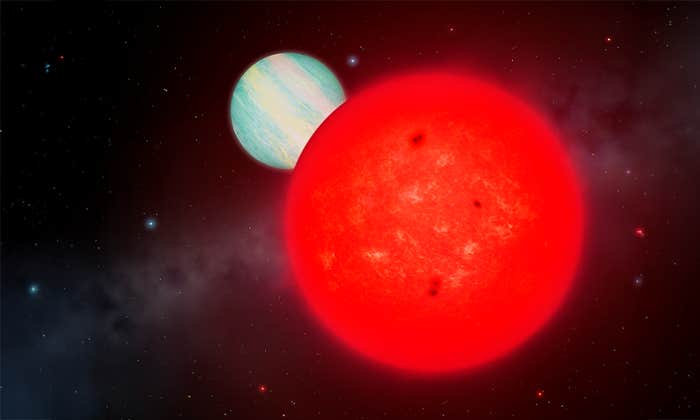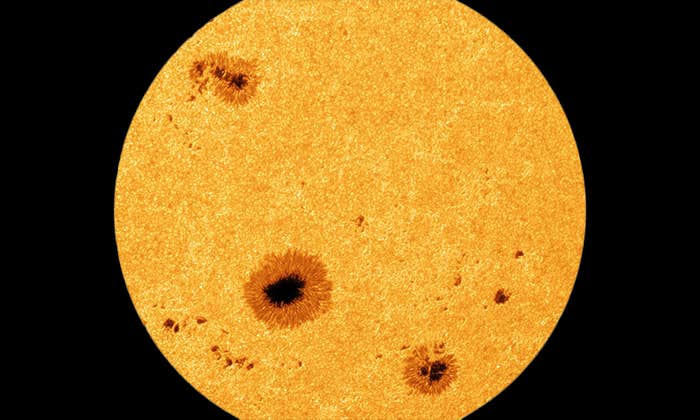On the dark night of March 13, 1781, William Herschel settled down in his garden observatory in Bath, England, for a routine night of observing stars, when he noticed something out of place in the heavens. Through the eyepiece of his homemade 7-foot telescope, he spied an interloper in the constellation Gemini: “a curious, either nebulous star or perhaps a comet,” as he recorded it. For weeks, he stalked the unknown object, monitoring its steady appearance and circular path around the sun until there could be no doubt about its true identity. He had discovered not a comet but a new planet, far more distant than any of the others.

Being a politically astute fellow, Herschel proposed naming the planet Georgium Sidus, or “George’s star,” in honor of King George III. The ploy worked—he promptly was named the king’s astronomer and received a royal stipend—but his colleagues outside of England objected. They wanted a noble and politically neutral name like Urania, the Greek muse of astronomy. In the end, scientists settled on the even more dignified “Uranus,” the ancient Greek god of the sky and ancestor of the other deities. Centuries of snickering ensued.
But seriously. Uranus orbits the sun at twice the distance of Saturn, so Herschel’s discovery instantly doubled the size of the known solar system. From a modern perspective, it’s hard to appreciate how shocking that was. At the time, the solar system was the only charted region of space; nobody yet had a clue about how far away even the nearest the stars were. In effect, Herschel had doubled the size of the entire known universe. He also brushed away the final traces of classical astronomy and astrology. Uranus is typically described as the first planet discovered since antiquity, but it’s more accurate to say it was the first planet to be discovered, period. All the others are readily visible to the naked eye, and so were known to all. Uranus shattered the common assumption that there were no more planets beyond the six classical ones, establishing an endless-frontier ethos that resonates through science and science fiction to this day.
The cloudy surfaces of Uranus and Neptune are marked with raging storms and the fastest winds recorded on any planet.
That ethos is part of daily life for Kirby Runyon, a young geomorphologist at Johns Hopkins University’s Applied Physics Lab, who is developing new ways to study Uranus and its similar-but-bizarrely-different planetary sister, Neptune. Like the handful of others who study this distant duo, he is enthralled by the boundary-busting nature of the solar system’s outermost planets. “What brought me into space science as a professional was the chance to, as Star Trek says, ‘explore strange, new worlds’,” Runyon says. “If you like seat-of-your-pants, Captain Picard-style exploration, then Uranus and Neptune have to rank high in your list.”
You have to admire Runyon’s passion. After all, who dreams of a space voyage to Uranus or Neptune? They are not brightly ringed like Saturn, nor do they hold the prospect of life like Mars. The two planets, though, still hold a special status as worlds on the edge. They formed in chaos, at the boundary between the inner, planetary part of our solar system and the outer zone filled with far-flung comets. In this transitional zone, they also took on transitional forms, with a size and composition that places them halfway between gas giant planets like Jupiter and rocky planets like Earth. Astronomers call these in-betweeners “ice giants,” and are now finding that such midsize worlds are extremely common around other stars. “Neptune and Uranus are the closest analogs in our solar system to the most populous type of planet that we know of,” says Heidi Hammel, a veteran researcher of the outer planets who is now at the Association of Universities for Research in Astronomy in Washington, D.C.
Uranus and Neptune are also fascinatingly odd in themselves. Their cloudy surfaces are marked with raging storms and the fastest winds recorded on any planet, while high above they have complex systems of moons, including ones that may harbor buried oceans. All the more shame, then, that only a single spacecraft has ever visited them—and that was more than three decades ago. “They’re enigmas because they are so far away,” Hammel says wistfully, “but they are such intriguing enigmas.”
Long before anyone was poking rockets above Earth’s atmosphere, Uranus was already directing astronomers on a virtual voyage through the solar system and beyond. In the decades after Herschel’s discovery, observations of Uranus indicated that it was deviating from its expected orbit around the sun. By the 1820s, the discrepancy was undeniable: Either Newton’s theory of gravity was wrong, or there was some object beyond Uranus that was tugging it off course. “The Newtonian theory appeared to the great majority, perhaps nearly all, astronomers to be the impregnably true system of the world,” writes science historian Robert W. Smith.1 At the same time, the discovery of Uranus had already demonstrated the possibility of more new worlds. Faith in the laws of physics dictated that there must be another, unseen planet out there.
That faith paid off on Sept. 23, 1846, when German astronomer Johann Gottfried Galle—using calculations provided by French mathematician Urbain Le Verrier, in an act of trans-national nerd comity—spotted a new planet less than one degree from its predicted location. The orbital calculations pinpointing its location took years to complete; Galle’s visual search for the planet required all of one hour. Galle suggested naming it Janus, the two-faced Roman god, implying that it was facing outward toward the stars. The more optimistic Le Verrier objected. “Janus would indicate that this planet is the last of the solar system, which there is no reason to believe,” he wrote.2 Instead, he proposed Neptune, the god of the sea.
The concept of dark matter actually began with Neptune, the first celestial object ever discovered before it was seen.
The discovery of Neptune was as transformative as that of Uranus, though in a quite different way. Uranus had already expanded the scale of the known universe. Neptune expanded the means by which we could get to know it. When Galle saw the planet exactly where Newton’s equations said it should be, he demonstrated that astronomers could detect celestial bodies by gravity alone. Now they could track down objects that had never been observed, perhaps even ones so dark or distant that they fundamentally could not be observed.
Modern cosmologists use the term “dark matter” to refer to invisible mass that is thought to influence the formation and structure of galaxies across the universe; in that sense, the term traces back to a 1933 paper by the Swiss-American cosmologist Fritz Zwicky. But the concept of dark matter truly began with Neptune, the first celestial object ever discovered before it was seen. From there, things escalated quickly. German astronomer Frederick Bessell had been tracking the erratic motions of the bright stars Sirius and Procyon and deduced that they, like Uranus, were being pulled off-course by unseen objects. “The existence of numberless visible stars can prove nothing against the existence of numberless invisible ones,” Bessell wrote in 1844.3 Invisible stars sounded like an oxymoron, but the discovery of Neptune made the outlandish idea seem more plausible. The reality of those dark companions was soon confirmed; in the 1910s the objects were identified as white dwarfs, the faint, collapsed corpses of stars like the sun. Similar detective work in the 1970s led to the discovery of black holes scattered across our galaxy.
In all this excitement, Uranus and Neptune themselves largely got left behind. They languished in scientific obscurity for another century and a half, mostly because they are so damn hard to study. Uranus never comes within 1.6 billion miles of Earth, 40 times as far as Mars; Neptune is a billion miles farther still. Its apparent size in the sky is equivalent to a dime seen from a mile away. The development of deep-sky photography beginning in the late 19th century greatly boosted the study of our galaxy and led directly to the discovery of countless other galaxies beyond. For the ice giant planets, however, the new technology had an opposite effect. When astronomers stopped looking through the eyepiece and started focusing on photographic plates instead, the planets became even more obscure.
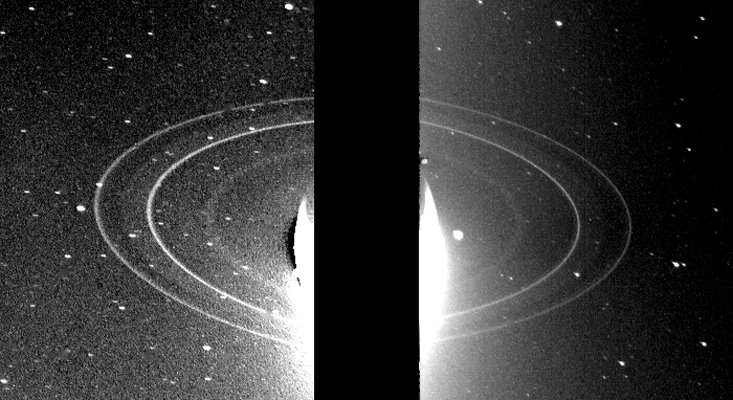
“Going back to the 1800s, early observers would look at Uranus and see bands and other features,” Hammel says. Their eyes were trained to pick out the fleeting moments when the air becomes steady and fine details pop into view. Photography and early forms of digital imaging couldn’t capture those split-seconds of clarity. Instead, they yielded blurry, long-exposure images that suggested the outermost planets were bland and unchanging. “The technology of the time smeared everything out, giving rise to this mythology that Uranus had no cloud features,” Hammel laments. “We had a hundred years of misinterpretation.”
Then at long last humans developed the technology to visit the ice giants and see them up close … and the misinterpretations just kept coming. On Jan. 24, 1986, NASA’s Voyager 2 swooped over Uranus’s cloud tops and sent back picture after picture of a featureless blue-green orb. By bad luck, the spacecraft had arrived at the beginning of summer in the planet’s northern hemisphere, a time when the global weather turns hazy and bland. The Voyager 2 images cemented the idea of Uranus as a boring planet—a knock that still galls Hammel. “It was like, ‘Let me show you a picture of what I looked like on one day in 1986.’ That doesn’t give you an understanding of who I am as a person,” she says.
The Voyager flyby did offer hints that there’s more to Uranus than meets the eye. The planet has a system of thin, dark rings, which turn out to contain large chunks—possibly the remains of a moon that was destroyed long ago. More surprising, Voyager’s instruments showed that Uranus’s magnetic field is tilted 60 degrees relative to its axis, as if your compass needle pointed to Houston instead of the north pole. There must be a huge, lopsided magnetic generator cranking away inside the planet, which leaves Hammel buzzing with questions: “What kind of internal structure can do that? Is it stable? Does it change over time?”
But the reputation of the ice giants didn’t really recover until Voyager 2 reached Neptune on Aug. 25, 1989. Unlike its sibling, Neptune was a riot of activity. It seemed to be staring back at the spacecraft with its Great Dark Spot, an anticyclone storm (a hurricane in reverse, with a high-pressure eye) nearly as large as the entire Earth. The Spot was streaked with white clouds of methane ice and surrounded by smaller storms and dark bands circling the entire planet, all tinged a rich, deep blue by methane gas in Neptune’s atmosphere. Beautiful, complex, and not at all boring.
The Voyager results revealed that weather operates differently on ice giants than it does here on Earth, for reasons that scientists are only starting to decipher. “Wind speeds increase as you go farther out from the sun, which is weird,” says Amy Simon, a Uranus and Neptune enthusiast at NASA’s Goddard Space Flight Center. On Uranus, they blow at 550 mph, as fast as a jet airplane at cruising speed. On Neptune, the winds are even fiercer, averaging 700 mph and gusting to 1,500 mph around the Great Dark Spot. They manage to pick up tremendous energy, even though Neptune receives just 1/900th as much solar heat as Earth does.
Seasons on the ice giants are also unlike anything seen on Earth or anywhere else. For one thing, the seasons are extreme, especially on Uranus: The planet is tipped sideways, so its poles spend half the time in perpetual sunshine and the other half in total darkness. For another, seasons take a long time to change, because the ice giants follow huge, lazy paths around the sun. Uranus takes 84 years to complete a single orbit, and Neptune takes 165 years. Neptune’s northern hemisphere was heading into winter when Voyager flew by in 1989.4 Springtime won’t arrive until 2038. The ice giants have both the fastest and the slowest climates in the solar system, which makes them useful as extreme natural laboratories. “We run the same weather and climate codes we use on Earth, and we learn about unknown sensitivities or details that aren’t quite right,” Simon says. “And if someday we want to apply these codes to planets around other stars, they’d better work across our whole solar system first.”
Uranus is tipped sideways, so its poles spend half the time in perpetual sunshine and the other half in total darkness.
In 2014, belatedly acknowledging the mad complexity of weather on the ice giants, NASA greenlit the Outer Planet Atmospheres Legacy program, or OPAL, with Simon in charge; her glorious official title is Senior Scientist for Planetary Atmospheres Research. Once a year, OPAL takes over the Hubble Space Telescope and turns it into an outer-planet weather satellite, monitoring conditions on Uranus and Neptune (and Jupiter and Saturn, for good measure), with Simon as the interplanetary weathercaster.
For the first time, scientists have both the time and the clarity of vision to learn the long-term personalities of Uranus and Neptune. Simon’s reserved demeanor lights up when she describes the quirks she has been observing on her planets. As Uranus has progressed from northern summer to late autumn, its weather has transitioned from hazy to crazy. “We see a polar cap that has gotten really bright and thick. And we’ve seen little storms. They tend to break apart really fast, on order of an hour, because the high winds shear things apart very quickly,” she says. Those changes demonstrate that even tiny variations in solar energy can transform the weather of a giant planet, nearly four times the size of Earth.
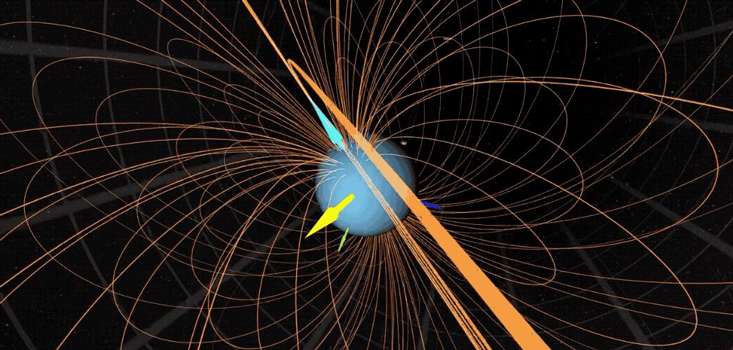
On Neptune, the most significant finding from OPAL is that the activity just never ends. “The big thing we’ve found has been the dark spots. In our few years of monitoring, we’ve seen two more of them. One was already there when we started, and it disappeared over a couple of years. The other one formed in 2019. After they form, the dark spots start to drift in latitude, just like a hurricane on Earth, until eventually they break apart,” Simon says.
It’s not clear what maintains all of this activity. One possible explanation, Hammel notes, is that the planets’ ultra-cold air is almost frictionless, so it takes very little kick to get big storm systems going. One important clue is that the two ice giants behave quite differently, despite being almost identical in mass, composition, and diameter. “Uranus and Neptune don’t look much alike at all. We see a lot more of the discrete storms on Neptune than on Uranus, and we don’t see much of a bright polar cap,” Simon says.
The disparity hints at stark differences deep inside the two ice giants. Voyager measurements showed that Neptune emits 2.7 times as much heat as it receives from the sun, apparently retaining a lot of energy from the time of its formation. Uranus, in contrast, sheds just a trickle of additional warmth. “Internal heat’s got to be a much bigger factor than the sunlight in driving the weather, but we’re still trying to puzzle some of that out,” says Simon. If anything, it adds another layer of mystery: Why is Neptune so much hotter under the collar than Uranus? One hypothesis is that Uranus had a near-fatal encounter with a huge proto-planet, twice as massive as Earth, some 4.5 billion years ago. The collision could have knocked it over, explaining its sideways tilt, while scrambling its interior in a way that allowed its primordial warmth to escape: one tidy explanation for two major oddities.
“It’s a nice idea, but it seems a bit contrived,” Simon says, her measured tone returning. “Every time we think we understand these planets, we realize we don’t.”
One way to learn more about the ice giants is to get under their skin, by recreating them in the lab. Based on what they can measure and infer about their overall composition, planetary scientists have deduced that both Uranus and Neptune must contain vast quantities of water, ammonia, and methane on the inside. In everyday life, we’d call that combination “Windex and natural gas.” Inside the ice giants, however, these molecules mingle together into a slush that astronomers refer to generically as “ice”—hence the term ice giants. Recent experiments show that it is not like any ice you have ever seen, however.
Dominik Kraus, a physicist at the University of Rostock in Germany, leads a group of researchers who have been shooting X-ray lasers at simulated bits of ice-giant material, heating and compressing it to match conditions in the planets’ interiors. He finds that the carbon atoms spontaneously break free of their molecules and arrange themselves into diamonds. Inside Uranus and Neptune, such diamonds could grow to the size of a person, slowly raining down toward the core of the planet. The diamond rain would release energy and stir up huge currents, possibly explaining the unusual magnetic fields of Uranus and Neptune.
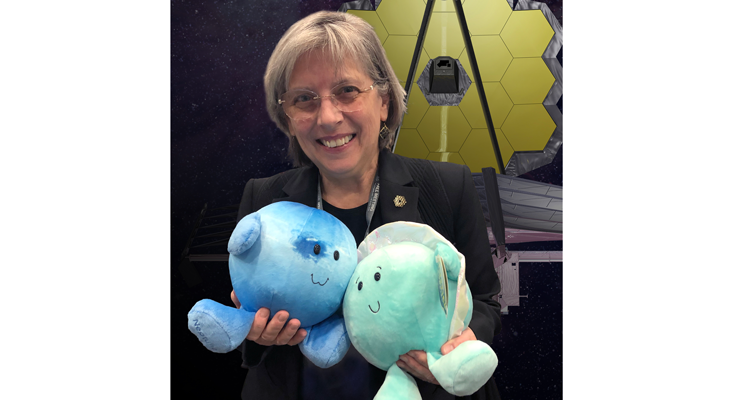
In parallel work, Marius Millot at Lawrence Livermore National Laboratory and his colleagues subjected water molecules to similarly extreme conditions and found that it turns into previously unseen material, “superionic ice”—a hot, black, crystalline version of water, also known as Ice XVIII. It sounds exotic, but maybe it shouldn’t. Given how much water is inside the ice giants, and given how many ice giants astronomers are finding around other stars, superionic ice may actually be the most common form of water in the universe. Black ice and diamond rain could be the norm; lakes and rivers and lumps of coal may be the cosmic oddities.
Another way to know more about the ice giants is to look at the company they keep—the large systems of moons that orbit Uranus and Neptune. Like Uranus itself, its moons are tilted at a rakish, 98-degree angle. No other planet is oriented that way. Whatever knocked the planet over evidently took its moons along for the ride. “If a large impact tipped the whole planet on its side, then the gravitational excess from Uranus’s equatorial bulge would have pulled its whole system of moons to be on its side as well,” says Runyon.
The moons of Neptune document a whole other style of disaster, one that spared the planet but unleashed pandemonium around it. Neptune’s system of moons is overwhelmingly dominated by a single large one, Triton, surrounded by 13 much smaller bodies, mostly in irregular, looping orbits. Triton orbits the planet in a clockwise direction, the opposite of every other planet and major moon, indicating that it formed separately and later got snared by Neptune. When that happened, it must have rolled through the Neptunian system like a bowling ball, as Runyon explains: “The gravitational interactions from Triton probably scattered Neptune’s original system of moons. If there were rings, it would have scattered them, too.” The current moons either reassembled from the wreckage or were captured afterward. Triton also left behind a set of thin, clumpy rings that bunch together in arcs, unlike any other formation in the solar system.
Inside Uranus and Neptune, diamonds could grow to the size of a person, raining down toward the core of the planet.
The Voyager 2 flybys of the 1980s unveiled the ice-giant moons as a set of distinctive worlds. The five main moons of Uranus display ancient chasms, ripples, and hints of volcanic flows—all made of frozen water and other ices instead of rock. The two largest, Ariel and Titania, appear to have been geologically active for an extended period of time. The smallest, Miranda, is a jumble of formations that looks like a jigsaw puzzle that was put together by an inattentive child; nobody knows how it got that way. But the true marvel is Triton, a geologically youthful world that resembles a cantaloupe, its surface sculpted by “cryovolcanic” eruptions of water-ammonia lava. Triton is also dotted with active geysers, likely caused by the explosive defrosting of underground nitrogen. To the amazement of mission scientists, Voyager 2 sent back images of sooty plumes shooting 5 miles into the air and trailing for hundreds of miles.
Triton broadly resembles Pluto, but it is in many ways the wilder and more exciting of the duo (not to keep dumping on the dwarf planet, but facts are facts). It is about 15 percent larger than Pluto and, more significantly, it is more geologically active, with liquid water sloshing away underground. That’s right: A moon around the coldest, most distant planet in the solar system contains a huge, underground ocean. “Triton is exchanging gravitational energy with Neptune, so it’s warm and gooey on the inside,” Runyon says. “On Earth, living things like warm, gooey places. If you put Earth microbes in that warm, gooey Triton ocean, they would probably survive and proliferate. Which raises the possibility, since we don’t really know how things go from non-life to life, that Triton could be a habitable and inhabited world.”
He’s not saying aliens, mind you. He’s just saying there could be aliens.
Despite all of these insights, we are in many ways still at the handshake stage of getting to know the ice giants. The OPAL program watches the planets for less than one day a year. Voyager 2 gathered only limited information about the planet’s composition and internal structure. The flybys happened so quickly that the spacecraft saw just one side of the Uranian and Neptunian moons. “There’s that whole unexplored other half. We don’t know what the heck is happening on the rest of Triton,” Simon says.
The yearning for deeper familiarity is even more acute now that astronomers recognize Uranus and Neptune as prototypes of billions of similar worlds all across our galaxy. Right now, these exoplanets—planets around other stars—are true cyphers. Astronomers can deduce their sizes, masses, densities, and not much else. Still, that’s enough to tell that many of them seem like slightly shrunken versions of Neptune, with thick, toxic atmospheres. Others, just a wee bit smaller, seem to be rocky “super-Earths.” Nobody knows why this dividing line exists, or whether super-Earths could be habitable. For that matter, nobody yet knows whether ocean moons like Triton can support life. When you’re dealing with ice giants, you get used to the three-word mantra: We don’t know.
That mantra explains why Runyon just completed an intense round of work as project scientist on Neptune Odyssey, a proposed flagship—that is, multi-billion-dollar—NASA mission that would perform an extended survey of Neptune and Triton while dropping a probe into Neptune’s atmosphere. The technology exists to mount an ambitious expedition like this. Even the sober analysts at the National Academy of Sciences have identified an ice-giant mission as a high scientific priority. Unfortunately, these kinds of projects keep getting shot down. Earlier this year, NASA came close to approving Trident, a stripped-down mission to Triton, but passed it over in favor of a pair of probes to Venus.
A big part of the problem is the waiting. It took Voyager 2 a dozen years to reach Neptune. If Trident had been approved, it wouldn’t have reached its destination until 2038—and even then, it would have sent back just another snapshot. If you want to study the ice giants, you have to adapt to their pace of doing things. No one researcher is going to live long enough to witness a full cycle of seasons on Uranus, much less on Neptune. The last mission to an ice giant happened 32 years ago, and realistically the next one is not likely to arrive until the 2040s at the earliest; this is inevitably going to be a multi-generational effort. Heidi Hammel (age 0.37 Neptune years) has been at it so long that she has largely moved on to administrative work. “This is sad to say, Corey, but I kind of don’t do astronomy anymore,” she confesses. But she’s encouraged to see people like Kirby Runyon (a spritely 0.21 Neptune years) entering the field.
Until someone invents warp drive or the like, there is no way to overcome the obstacle of time. The only path forward is embracing extreme patience as the cost—or the joy—of pressing into the unknown. After he discovered Uranus, Herschel explained it was not luck but persistence that brought the planet into view. “I examined every star of the heavens,” he wrote. That night in 1781 was Uranus’ “turn to be discovered.” Perhaps now it is the ice giants’ turn to be truly known, in all of their weird and wonderful glory.
Corey S. Powell is a science editor, writer, and ice-giant lover living in Brooklyn, NY. He co-hosts the Science Rules podcast with Bill Nye.
References
1. Smith, R.W. The Cambridge network in action: The discovery of Neptune. Isis 80, 395-422 (1989).
2. Kollerstrom, N. The naming of Neptune. Journal of Astronomical History and Heritage 12, 66-71 (2009).
3. Bessell, F. Extract from the translation of a letter from Professor Bessel, dated Kronigsberg, 10th of August, 1844. On the variations of the proper motions of Procyon and Sirius. Monthly Notices of the Royal Astronomical Society 6, 136-141 (1844).
4. Meeus, J. Equinoxes and solstices on Uranus and Neptune. Journal of the British Astronomical Association 107, 332 (1997).
Lead image: NASA / Scientific Visualization Studio / Tom Bridgman





















